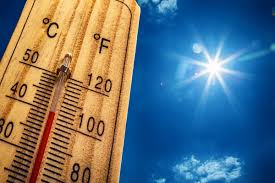GS 3 – GEOGRAPHY
Recent studies by IIT-Bombay and ETH Zurich highlight the increasing occurrence of oppressive heatwaves in India. These events, characterized by high temperatures and humidity, pose severe health risks and are expected to worsen with global warming.

Definition of Heatwaves
- General Definition: Periods of excessively high temperatures.
- India Meteorological Department (IMD) Criteria:
- Plains: Temperatures above 45°C for three consecutive days.
- Hilly areas: Temperatures above 40°C.
Types of Heatwaves
- Oppressive Heatwaves: High temperature combined with high humidity.
- Extreme Heatwaves: High temperature but low humidity.
Historical Data Insights
- Data from 1951 to 2013 was analyzed, focusing on temperature trends and heat-related mortality (1967–2007).
- Strong correlation found between oppressive heatwaves and increased mortality rates.
Future Projections
- 1.5°C Global Warming Scenario:
- Five-fold increase in oppressive heatwave days by the century’s end.
- 2°C Global Warming Scenario:
- Eight-fold increase expected.
Health Implications
- Increased frequency of oppressive heatwaves correlates with rising heat-related deaths.
- Urgent adaptation measures are essential to mitigate public health risks.
Role of Global Warming
- Limiting warming to 1.5°C could:
- Reduce oppressive heatwaves by 44%.
- Decrease extreme heatwave occurrences by 25%.
- Highlights the critical need for climate action to safeguard vulnerable communities.




